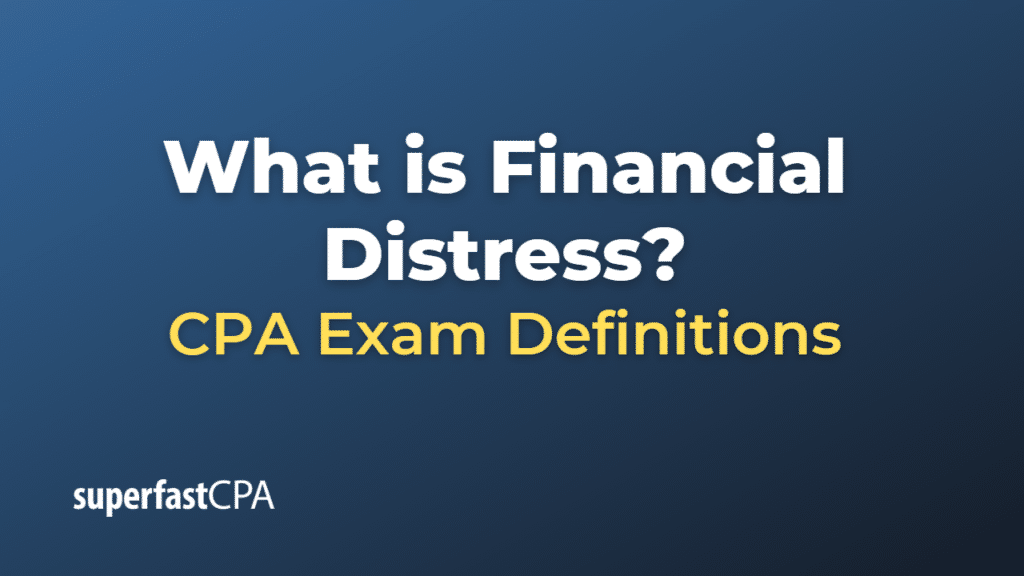Financial Distress
Financial distress is a condition where a company or individual is unable to meet or pay off its financial obligations to its creditors. This situation typically arises due to high fixed costs, illiquid assets, or revenues sensitive to economic downturns.
Financial distress can lead to bankruptcy if the company or individual is unable to change its financial condition. However, it’s important to note that financial distress does not always lead to bankruptcy. Companies can recover from financial distress by restructuring their debts, cutting costs, or turning around their operations.
Signs of financial distress in a company can include:
- Consistently Decreasing Profits or Increasing Losses: Companies that are not able to maintain profitability over time might be in financial distress.
- Increasing Debt Levels: A company may be in financial distress if it consistently increases its borrowings and struggles to pay them off.
- Cash Flow Issues: If a company consistently has issues generating positive cash flow from its operations, it may be in financial distress.
- Late Payments: Companies struggling to pay their bills on time might be experiencing financial distress.
- Lower than Industry Average Margins: If a company’s profit margins are significantly lower than the industry average, it could be a sign of financial distress.
Understanding the signs of financial distress can help stakeholders make more informed decisions. For example, investors can avoid companies showing signs of financial distress, and creditors can work with distressed companies to restructure their debt to avoid losses.
Example of Financial Distress
Let’s consider a fictional example of a company named “BikeWorld Inc.” which is in financial distress.
BikeWorld Inc. is a company that manufactures bicycles. The company had done well for many years, but recent market changes have put the company in a difficult financial situation.
- Decreasing profits: BikeWorld’s profits have been steadily declining over the past few years due to increased competition from new entrants offering similar products at lower prices.
- Increasing Debt Levels: To try and combat the falling sales, BikeWorld invested heavily in marketing and developing new products, funding these initiatives through increased borrowings. However, these efforts haven’t paid off as expected, and now BikeWorld finds itself with high debt levels.
- Cash Flow Issues: The combination of declining profits and increasing debt has resulted in cash flow issues for BikeWorld. It’s struggling to generate enough cash from its operations to cover its expenses, including interest payments on its debt.
- Late Payments: Because of its cash flow issues, BikeWorld has started making late payments to its suppliers, which has strained its relationships with these key business partners.
- Lower than Industry Average Margins: Despite its efforts to reduce costs, BikeWorld’s profit margins remain lower than the industry average due to its high debt service costs and the competitive pricing pressure.
In this situation, BikeWorld is clearly experiencing financial distress. The company will need to take significant steps to improve its financial situation, such as restructuring its debt, reducing costs, improving operational efficiency, or possibly seeking a buyer. If BikeWorld is unable to turn things around, it may eventually need to file for bankruptcy.













